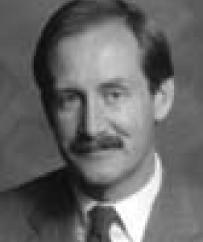by Pasadena Mayor Rick Cole
In November 1980, the citizens of Los Angeles County voted to tax themselves to invest in public transportation. It was a mandate for change. The recent unanimous vote by the Metropolitan Transportation Authority (MTA) to fund the Blue Line extension represents a decisive commitment to fulfill that mandate and reshape Southern California's future around public transportation investments.

"These developments do more than leverage public investment in transportation. They create a new urban fabric where those who make the choice of living near transportation can free themselves from the Southern California burden of having to drive a car (or wait forever for a bus) for even the simplest errands."
It was not an easy decision for the MTA. Harsh economic times have forced hard choices like shredding the vaunted "30-Year Plan." As MTA executive director Franklin White quickly discovered, the "plan" was really a wish list designed to be all things for all people. It programmed gushers of cash to highways, commuter rail, metro rail, light rail, buses, bicycles and everyone's pet projects. Now priorities must be chosen - and the protracted struggle over this year's budget reflected how painful it was for the MTA to break with the postwar pattern of sprawl and our region's addiction to autos. None of the programs competing with the Blue Line fundamentally challenged business as usual. The impact of the Red Line, despite its colossal cost, is essentially limited to downtown. The Green Line is really just a high tech HOV lane down the middle of the Century Freeway. Metrolink commuter lines actually reinforce the jobs-housing imbalance; they're freeways with stations instead of offramps. Even investing in buses, while worthwhile, represents only a band-aid response to aid the young, the old, the poor and the disabled from total estrangement in the land of cars.
The Blue Line extension breaks with a half century of suburban sprawl and autotopian development. It commits the MTA to funding not only an alternative way for people to get from Pasadena to downtown, but it makes an investment in a different strategy of urban development, the missing dimension in the 30-year plan. Even more than the first Blue Line link completed to Long Beach, the extension to Pasadena will reshape the way we grow in the century ahead.
Pasadena has staked its destiny on the principles of “targeted growth" and ending our disastrous dependence on automobiles. Our new General Plan dissolves the artificial separation between transportation and land use planning. The region is learning the same lesson: density and transit belong together. That is what we mean by targeting growth.
A tangible prototype for that strategy is already under construction. The Civic Center West project represents the way we must integrate transit and land use to build cities that are economically, socially and environmentally healthier places. Some call this "neo-traditional planning" or "transit oriented development." I call it “back to the future," recreating human-scale, balanced cities instead of degenerating into "Blade Runner" urban cesspools.
Civic Center West, developed by the Janss Corporation, is a mixed use project of 378 apartment-units and 15,000 square feet of ground-floor retail, built together with the Memorial Park light rail station for the Blue Line. It will bring over 1,000 residents to the downtown and Old Pasadena center of the city. Twenty percent of the residents will be low-income families, while the rest of the units will be at a premium market rate.
The project also serves to link the park, Old Pasadena and Civic Center to serve pedestrian flow with comfortable access to home, work, shopping, entertainment and even civic activity. Financed through a public-private partnership that included support from both the City of Pasadena and the MTA, the first phase begins renting apartments next January.
A similar mixed-use development for the Central Park station is taking shape on the drawing boards. The Catellus Corporation is working with the MTA and our city to develop a Pasadena Transportation Center. It will be more than a hub for buses and other local transit to tie into the Blue Line. Retail, office, and residential development will enliven the area around the clock.
An even more ambitious "Urban village" development of 1,200 units of housing is being planned just across the park. With the closure of the Ambassador College campus, the Worldwide Church of God is looking to release 16 acres for development of the vision in our General Plan of a new urban neighborhood within walking distance of both Old Pasadena and the Transportation Center/Blue line station.
These developments do more than leverage public investment in transportation. They create a new urban fabric where those who make the choice of living near transportation can free themselves from the Southern California burden of having to driven car (or wait forever for a bus) for even the simplest errands. And visitors will have the choice to ride light rail to a city where they can work, shop, dine and play without having to drive to each separate destination.
Growing up in Southern California, I absorbed our car culture and the freedom it once promised. But that freedom has become a cruel mirage: families eroded by the hours devoted to longer and longer commutes; social apartheid as the geographic ghettoization by race and class continues to intensify; stubborn and deadly poisoning of the air we breathe; skyrocketing costs for gas insurance, maintenance, parking, highways, law enforcement and even Mideast wars; and the blight of our landscape.
The Blue Line extension alone will not reverse the misguided investment we have made building Los Angeles around cars. But the MTA has made a bold and courageous choice. This substantial investment puts us firmly on the path that voters chose back in 1980. It is a down payment on our future. It represents change — for the better.
- Log in to post comments



